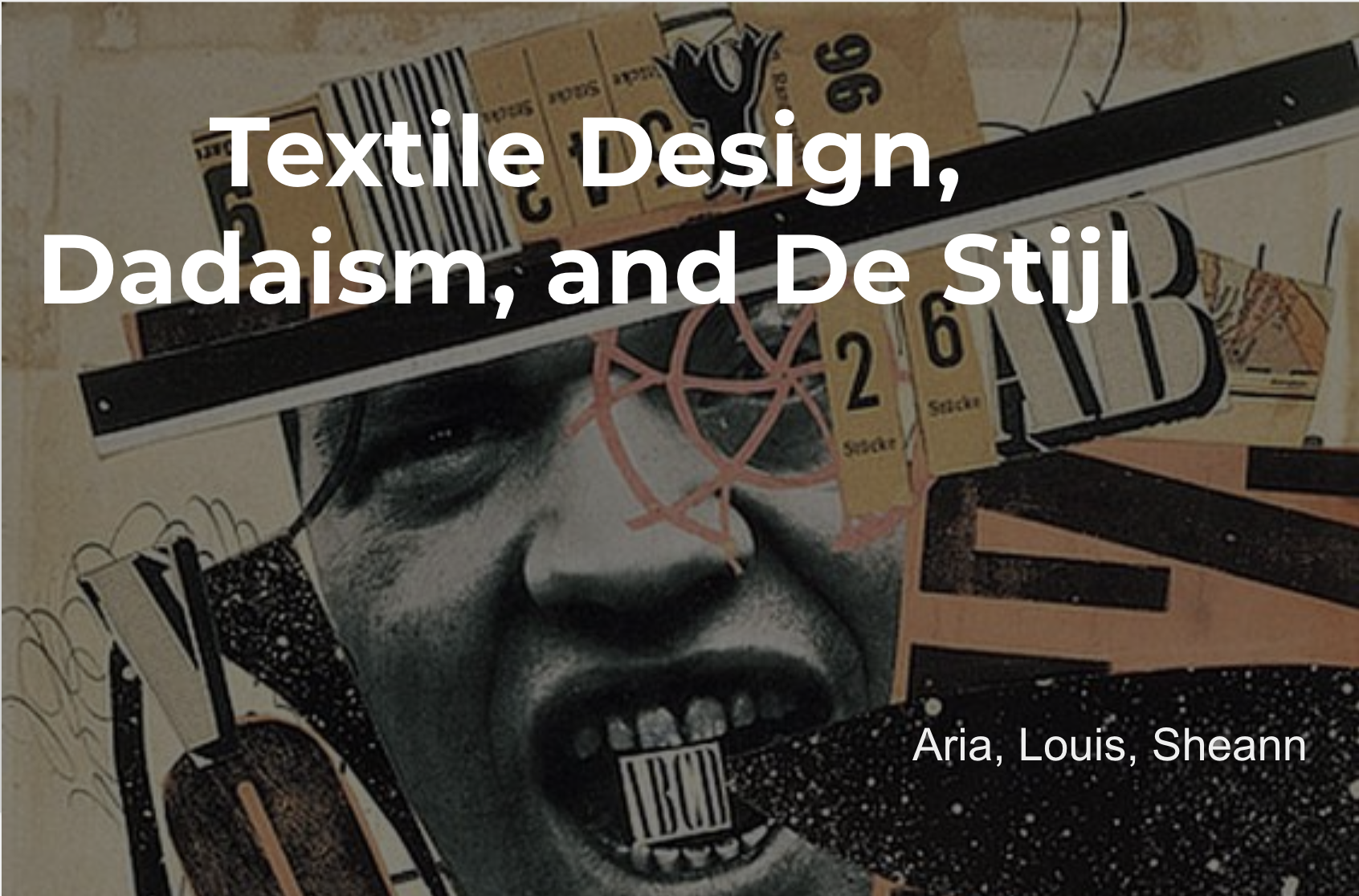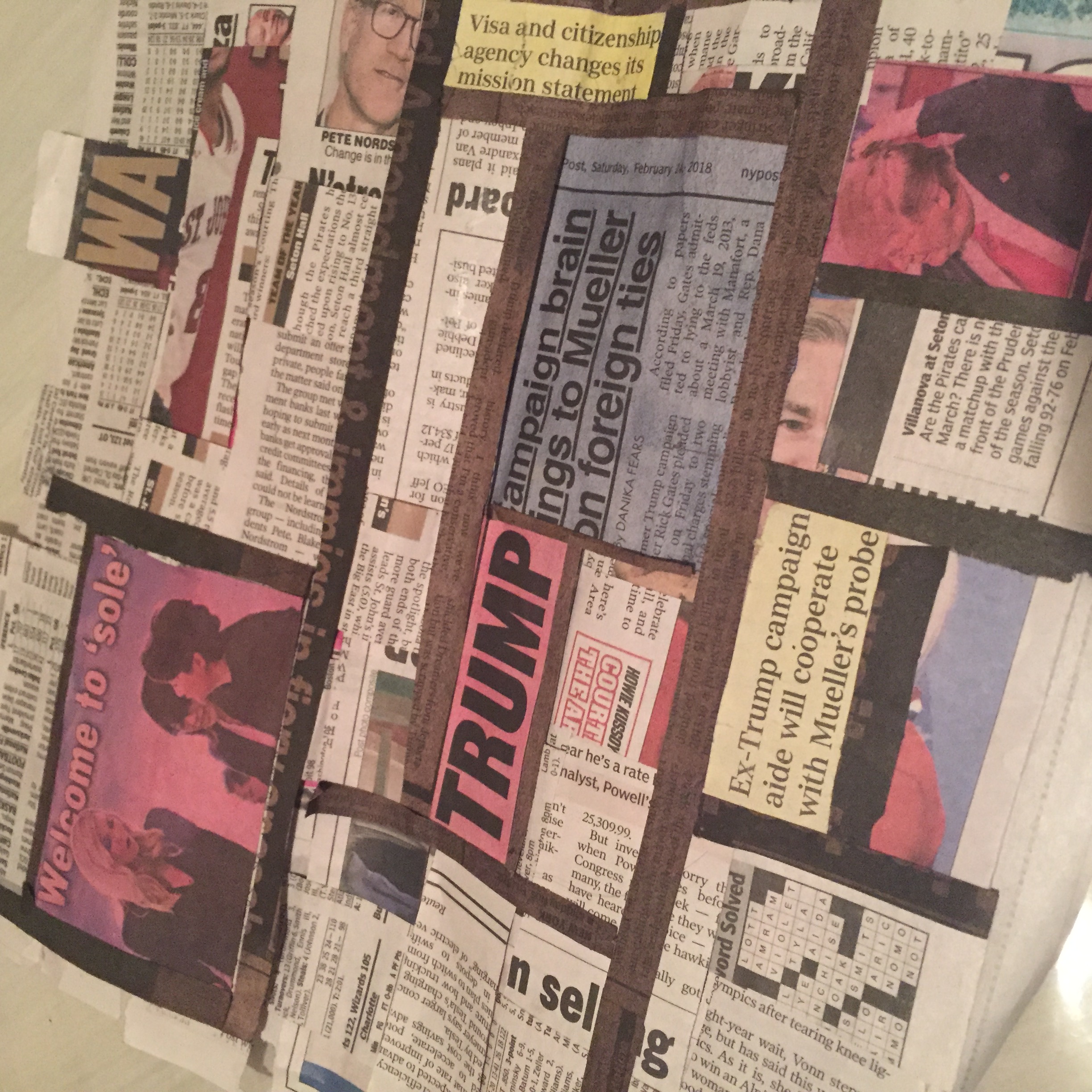In this group project, me and my two team mates were asked to interpret and create hybrids of three different visual cultures of our choice. My partners chose Dadaism and De Stijl, and I chose tapestry. We were expected create 3 objects individually, and one object as a group. Out of the four resulting hybrids, one had to be a 3 – dimensional piece.
I started the process of creating a hybrid by becoming more comfortable with my subjects. I had already done my own research on my own art form, tapestry, but wanted learn more about Dada-ism and De Stijl. Once I had looked at all three visual cultures in depth, I attempted to understand the core concepts of each of them. I came to the conclusion that tapestry was about the joining of separate pieces into a cohesive and beautiful whole. Dadaism was about suspicion of an widespread belief, hence the contrary nature of the art. Finally, De Stijl focused on creating harmony by simplifying every form to it’s most basic shapes and colors (rectangles, grids, primary colors, black and white). I shared this information with my group members.
I decided to make a cube, adhering to the rectilinear forms of De Stijl. Originally, I wanted everything adhered to the cube to be white, but If I was truly bringing everything to basic colors, all white would have been an over simplification. Black and the primary colors were necessary. This made the end product way busier than I had originally imagined. In order to account for Tapestry, I adhered different fibers to the surface of the cube. For example, I adhered braids of red, blue and yellow thread to the surface, as well as deconstructed denim, deconstructed poly-satin (the de-construction was a nod to De Stijl), yarn and stuffing cotton. The Dadaist component is the intent of the piece. I pushed the boundaries of both De Stijl and Tapestry with this cube. De Stijl is based on simplicity, however with several different fibers adhered to the cube (often without order), I’d hardly say this is anything’s simplest form. Additionally, paint is a taboo of sorts in tapestry and I’ve used ink for some of the colors of the cube. I also didn’t weave anything for this cube and tapestries were always woven in their time.
If i had had more time and more freedom, I would’ve explored other ideas I had. For example isn’t everything’s simplest form no form at all? I also thought about making a tapestry and then painting over whatever Image I produced, reducing it to it’s simplest forms and colors. I was also fond of the idea of making very crude and childlike drawings of masterpieces and turning the drawings into embroidery on t-shirts or socks. I didn’t have the time, energy or funds to explore these ideas further but I think it could’ve been cool.
The idea my group went with for the collaboration hybrid was a woven collage in a gridded pattern with certain spaces dyed different colors. We all agreed to cut newspaper clippings separately and come together to join them into this tapestry. Sheann, also dyed the paper.

